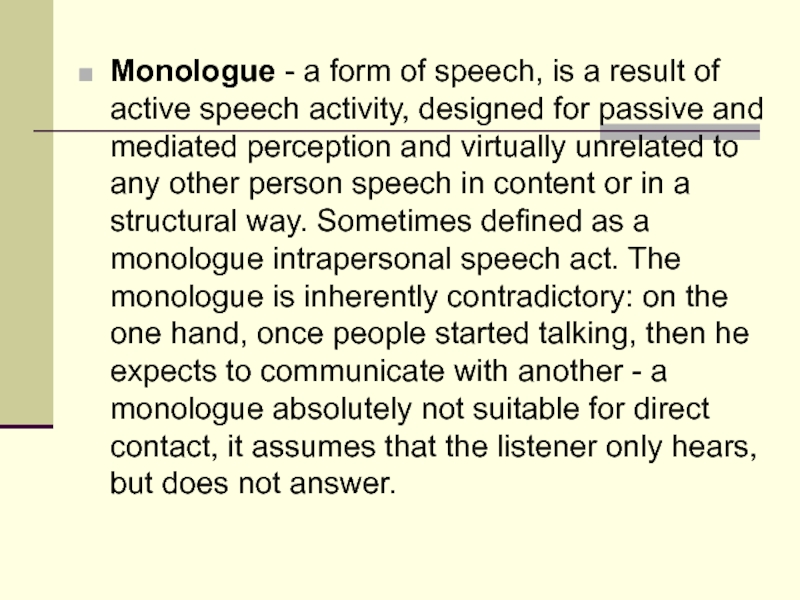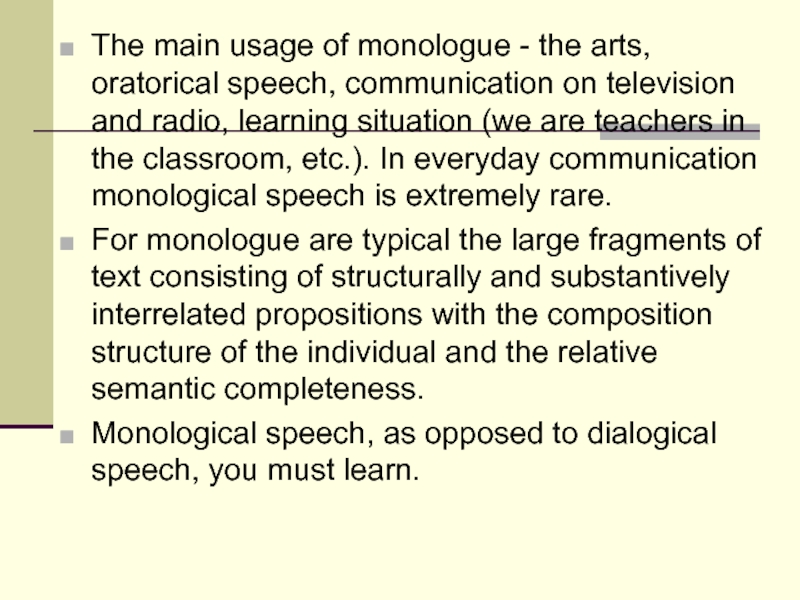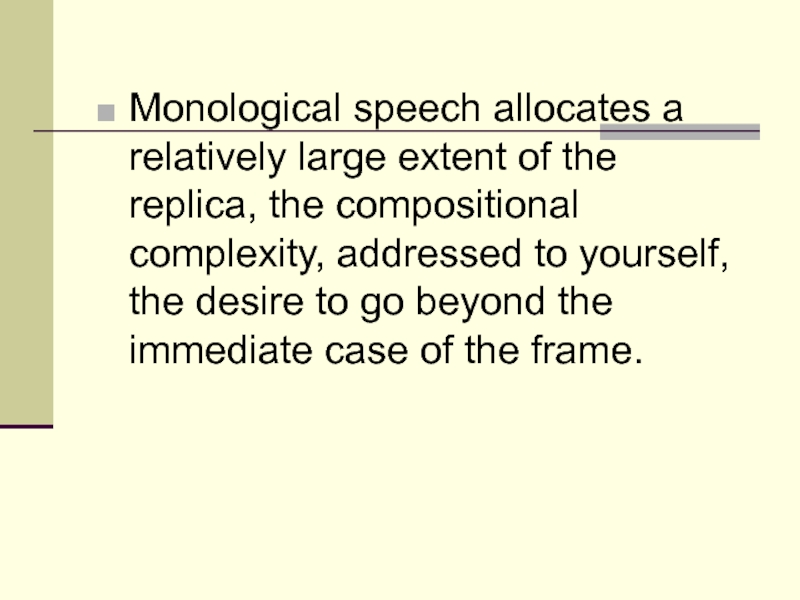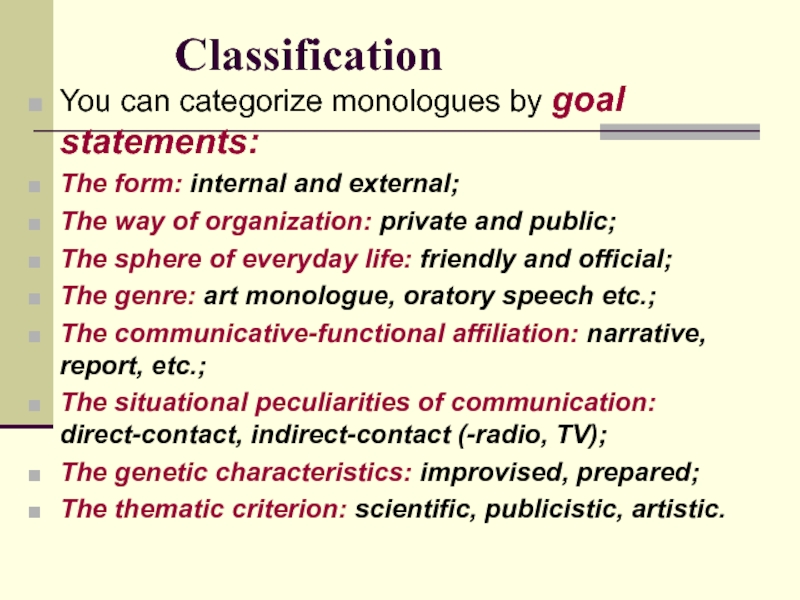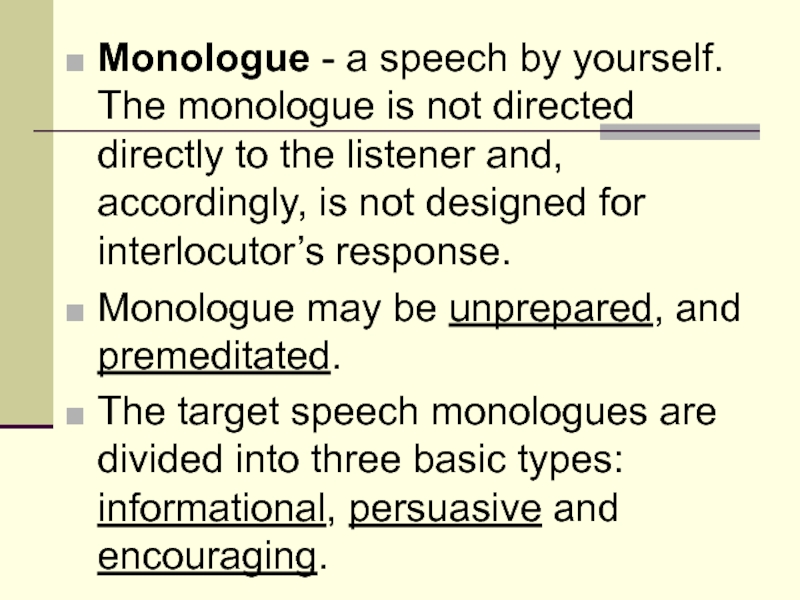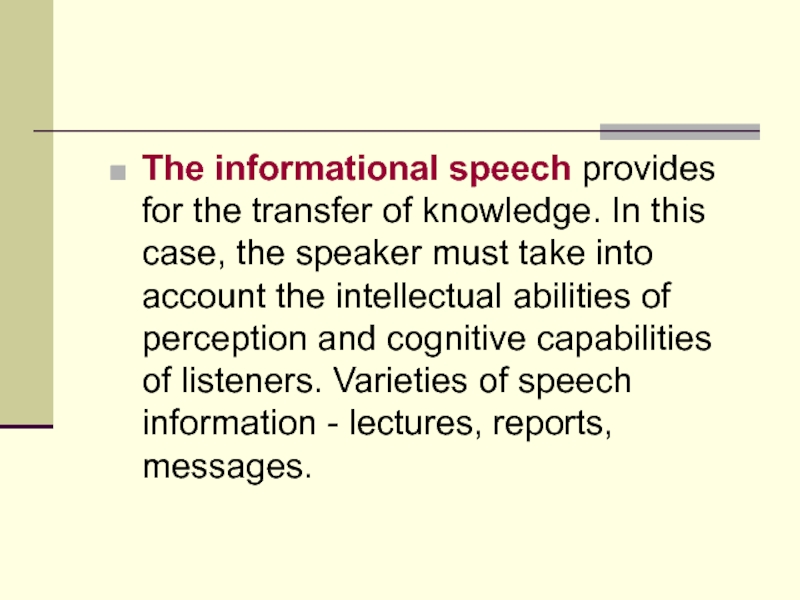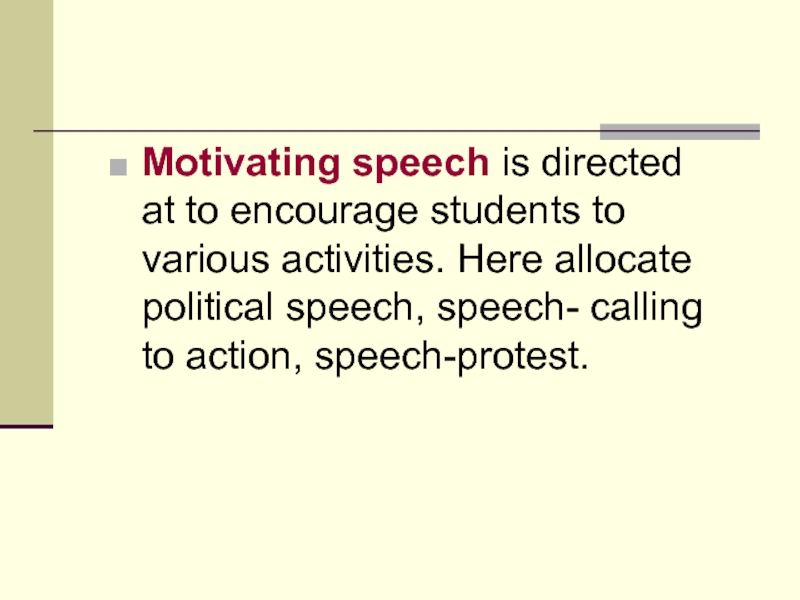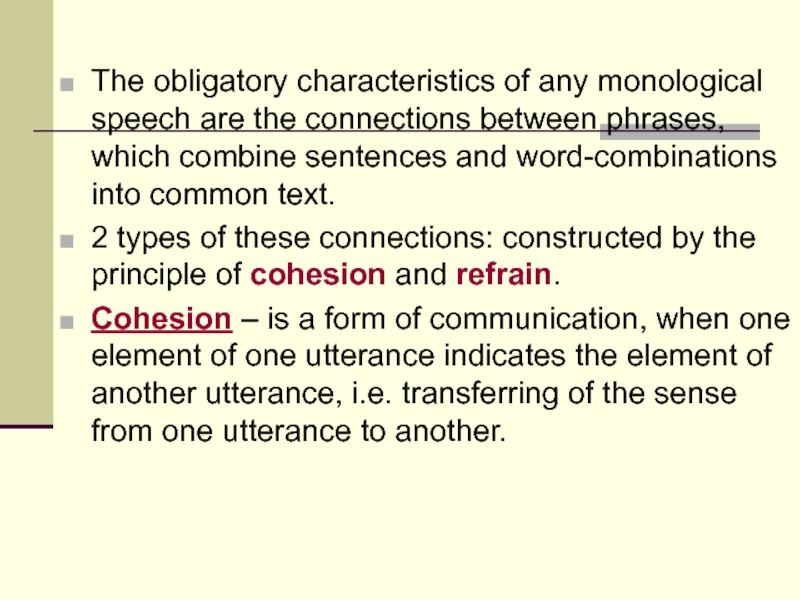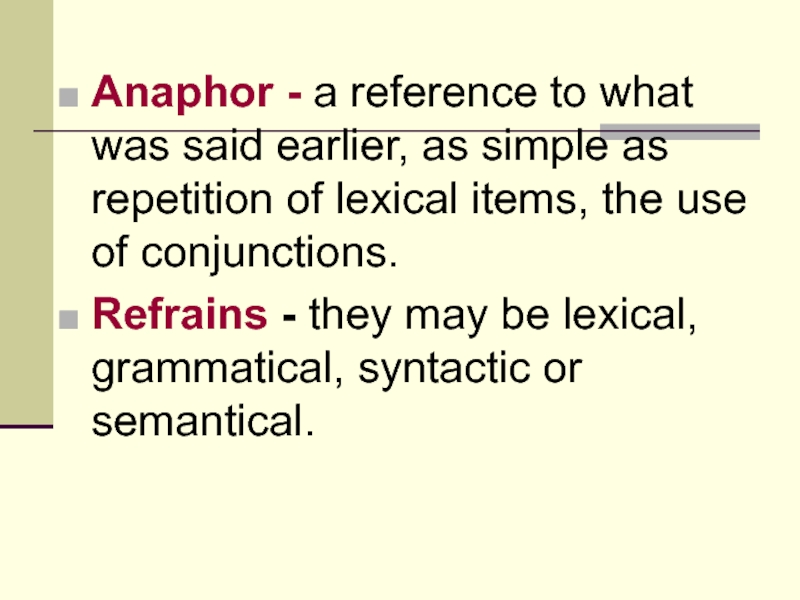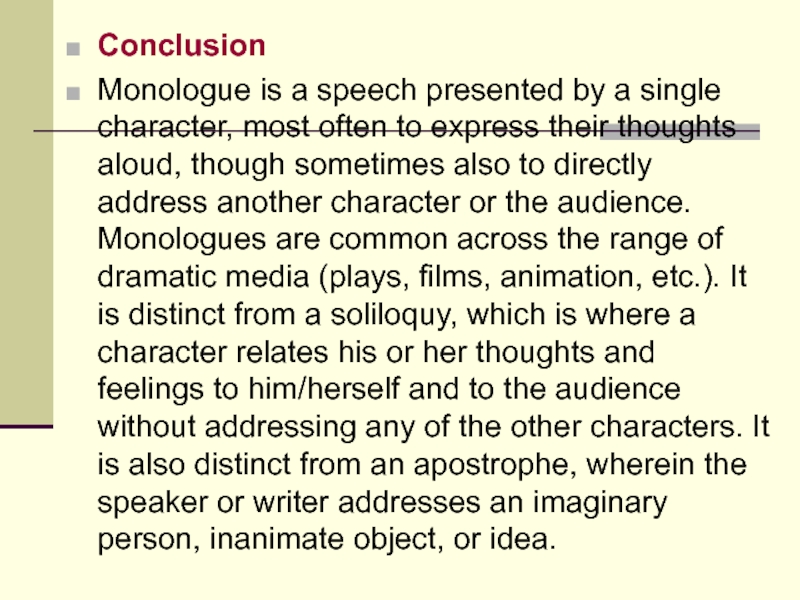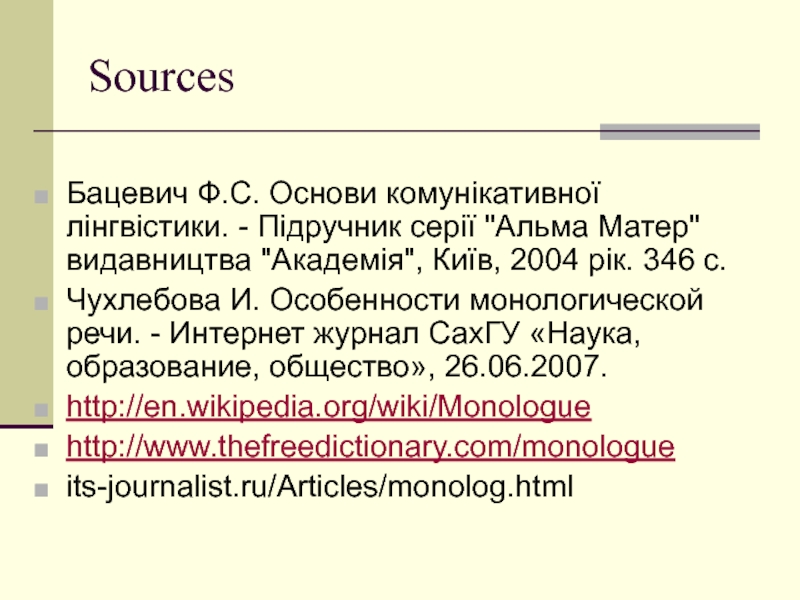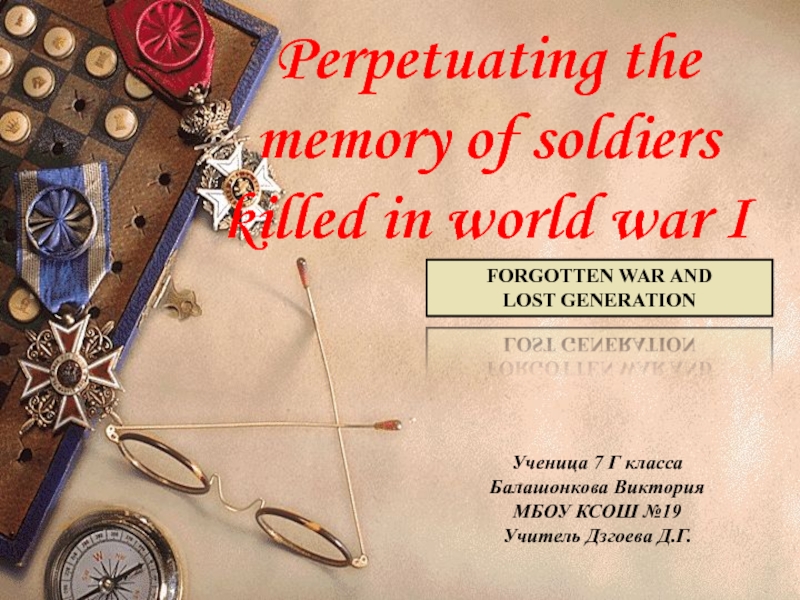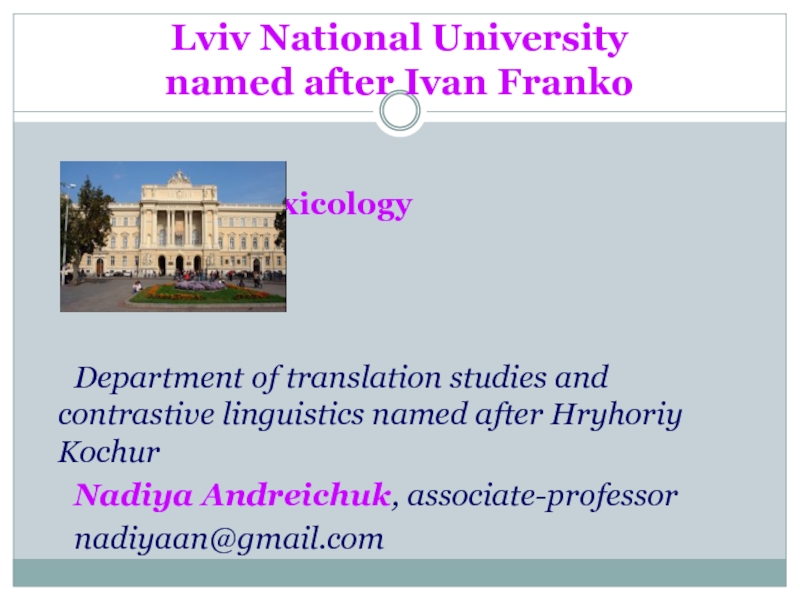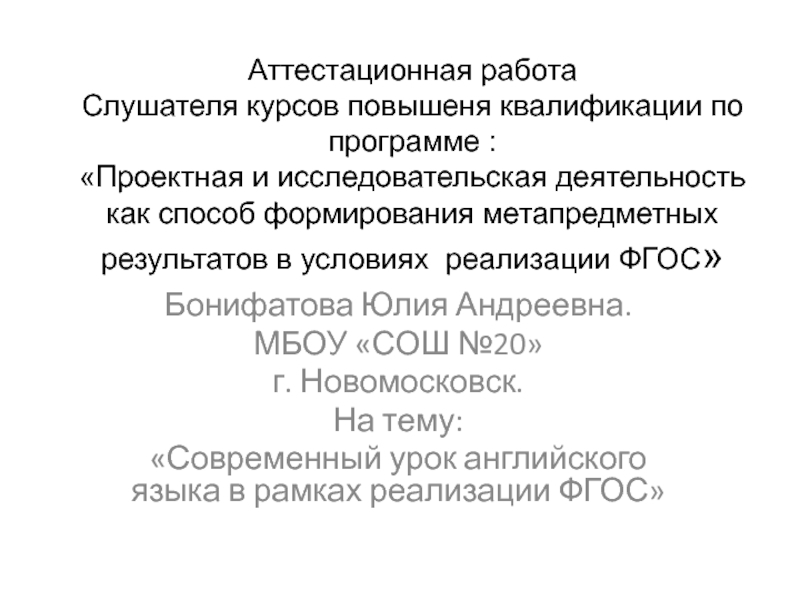- Главная
- Разное
- Дизайн
- Бизнес и предпринимательство
- Аналитика
- Образование
- Развлечения
- Красота и здоровье
- Финансы
- Государство
- Путешествия
- Спорт
- Недвижимость
- Армия
- Графика
- Культурология
- Еда и кулинария
- Лингвистика
- Английский язык
- Астрономия
- Алгебра
- Биология
- География
- Детские презентации
- Информатика
- История
- Литература
- Маркетинг
- Математика
- Медицина
- Менеджмент
- Музыка
- МХК
- Немецкий язык
- ОБЖ
- Обществознание
- Окружающий мир
- Педагогика
- Русский язык
- Технология
- Физика
- Философия
- Химия
- Шаблоны, картинки для презентаций
- Экология
- Экономика
- Юриспруденция
Monologue in interpersonal communication презентация
Содержание
- 1. Monologue in interpersonal communication
- 2. Monologue - a form of speech, is
- 3. The main usage of monologue - the
- 4. Monological speech allocates a relatively large extent
- 5. Classification You can categorize monologues by goal
- 6. Monologue - a speech by yourself. The
- 7. The informational speech provides for the transfer
- 8. Persuasive speech is addressed to the emotions
- 9. Motivating speech is directed at to encourage
- 10. Monologues are distinguished by the degree of
- 11. The obligatory characteristics of any monological speech
- 12. Anaphor - a reference to what was
- 13. Conclusion Monologue is a speech presented by
- 14. Sources Бацевич Ф.С. Основи комунікативної лінгвістики. -
Слайд 2Monologue - a form of speech, is a result of active
speech activity, designed for passive and mediated perception and virtually unrelated to any other person speech in content or in a structural way. Sometimes defined as a monologue intrapersonal speech act. The monologue is inherently contradictory: on the one hand, once people started talking, then he expects to communicate with another - a monologue absolutely not suitable for direct contact, it assumes that the listener only hears, but does not answer.
Слайд 3The main usage of monologue - the arts, oratorical speech, communication
on television and radio, learning situation (we are teachers in the classroom, etc.). In everyday communication monological speech is extremely rare.
For monologue are typical the large fragments of text consisting of structurally and substantively interrelated propositions with the composition structure of the individual and the relative semantic completeness.
Monological speech, as opposed to dialogical speech, you must learn.
For monologue are typical the large fragments of text consisting of structurally and substantively interrelated propositions with the composition structure of the individual and the relative semantic completeness.
Monological speech, as opposed to dialogical speech, you must learn.
Слайд 4Monological speech allocates a relatively large extent of the replica, the
compositional complexity, addressed to yourself, the desire to go beyond the immediate case of the frame.
Слайд 5Classification
You can categorize monologues by goal statements:
The form: internal and external;
The
way of organization: private and public;
The sphere of everyday life: friendly and official;
The genre: art monologue, oratory speech etc.;
The communicative-functional affiliation: narrative, report, etc.;
The situational peculiarities of communication: direct-contact, indirect-contact (-radio, TV);
The genetic characteristics: improvised, prepared;
The thematic criterion: scientific, publicistic, artistic.
The sphere of everyday life: friendly and official;
The genre: art monologue, oratory speech etc.;
The communicative-functional affiliation: narrative, report, etc.;
The situational peculiarities of communication: direct-contact, indirect-contact (-radio, TV);
The genetic characteristics: improvised, prepared;
The thematic criterion: scientific, publicistic, artistic.
Слайд 6Monologue - a speech by yourself. The monologue is not directed
directly to the listener and, accordingly, is not designed for interlocutor’s response.
Monologue may be unprepared, and premeditated.
The target speech monologues are divided into three basic types: informational, persuasive and encouraging.
Monologue may be unprepared, and premeditated.
The target speech monologues are divided into three basic types: informational, persuasive and encouraging.
Слайд 7The informational speech provides for the transfer of knowledge. In this
case, the speaker must take into account the intellectual abilities of perception and cognitive capabilities of listeners. Varieties of speech information - lectures, reports, messages.
Слайд 8Persuasive speech is addressed to the emotions of the audience, in
this case, the speaker must take into account its perception. Varieties of persuasive speech: greetings, festive, farewell.
Слайд 9Motivating speech is directed at to encourage students to various activities.
Here allocate political speech, speech- calling to action, speech-protest.
Слайд 10Monologues are distinguished by the degree of preparedness and formality. Oratorical
speech always presents itself as a prepared monologue, pronounced in a formal setting. However, to some extent, a monologue - is an artificial form of speech, always striving to dialogue. Therefore any monologue may have the means of dialogue.
Слайд 11The obligatory characteristics of any monological speech are the connections between
phrases, which combine sentences and word-combinations into common text.
2 types of these connections: constructed by the principle of cohesion and refrain.
Cohesion – is a form of communication, when one element of one utterance indicates the element of another utterance, i.e. transferring of the sense from one utterance to another.
2 types of these connections: constructed by the principle of cohesion and refrain.
Cohesion – is a form of communication, when one element of one utterance indicates the element of another utterance, i.e. transferring of the sense from one utterance to another.
Слайд 12Anaphor - a reference to what was said earlier, as simple
as repetition of lexical items, the use of conjunctions.
Refrains - they may be lexical, grammatical, syntactic or semantical.
Refrains - they may be lexical, grammatical, syntactic or semantical.
Слайд 13Conclusion
Monologue is a speech presented by a single character, most often
to express their thoughts aloud, though sometimes also to directly address another character or the audience. Monologues are common across the range of dramatic media (plays, films, animation, etc.). It is distinct from a soliloquy, which is where a character relates his or her thoughts and feelings to him/herself and to the audience without addressing any of the other characters. It is also distinct from an apostrophe, wherein the speaker or writer addresses an imaginary person, inanimate object, or idea.
Слайд 14Sources
Бацевич Ф.С. Основи комунікативної лінгвістики. - Підручник серії "Альма Матер" видавництва
"Академія", Київ, 2004 рік. 346 с.
Чухлебова И. Особенности монологической речи. - Интернет журнал СахГУ «Наука, образование, общество», 26.06.2007.
http://en.wikipedia.org/wiki/Monologue
http://www.thefreedictionary.com/monologue
its-journalist.ru/Articles/monolog.html
Чухлебова И. Особенности монологической речи. - Интернет журнал СахГУ «Наука, образование, общество», 26.06.2007.
http://en.wikipedia.org/wiki/Monologue
http://www.thefreedictionary.com/monologue
its-journalist.ru/Articles/monolog.html

